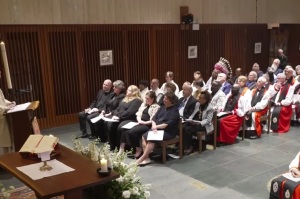Christmas History: Was Jesus Born in a Cave?
When thinking about the exact location of the birth of Jesus Christ, for most Christians in the United States if not Western civilization, a familiar image comes to mind. Surrounded by farm animals, the Christ child is laid within a manger, a stable that was likely made of wood with hay on the ground. Traditional images of said manger, the displays erected outside of churches, on public property or at home, generally involve a simple wooden structure as the setting.
However, in some Christian traditions the setting for the manger is not a wooden building, but rather a rockier less man-made locale.
Churches, like the Greek Orthodox Archdiocese of America, state that Jesus was born in a cave, as they were used by shepherds of the time to shelter animals from hostile weather.
"Joseph found a cave-like place where they could rest. This place was used by shepherds to protect their sheep in stormy weather. It was here that Mary gave birth to Jesus," reads an entry on the Archdiocese's website.
"Today, the Virgin bears Him who is transcendent, and the earth presents the cave to Him who is beyond reach. Angels, along with shepherds glorify Him. The Magi make their way to Him by a star. For a new child has been born for us, the God before all ages."
In modern Bethlehem, the ancient sanctuary of the Church of the Nativity stands over what is believed by many to be the exact location of Jesus' birth.
Qustandi Shomali, history professor at Bethlehem University, told CBN that he believed the Church to be upon the very place where Jesus was born. "The Church of the Nativity was built over this place in 326 when Emperor Constantine decided to declare Christianity as the official religion of the Roman Empire," said Shomali. "Since then, pilgrims from all around the world started coming to Bethlehem to visit this place. The place where Christianity started."
The idea of Jesus being born in a cave can be found in the early Church, as second century writers, like Justin Martyr and Origen of Alexandria, wrote that this was so.
Critics of the cave, like Bob Thielclaim, claim they have pointed to the lack of mention of such detail in the Gospels and that writers like Justin were likely influenced by pagan sources. "It would seem that Justin had been earlier (and unknowingly) influenced by one who had exposure to Mithraism, and Justin was looking for justification of a position that someone had told him," wrote Thiel.
"The idea that Jesus was born in a cave is simply based upon tradition and does not come from the Bible."




























